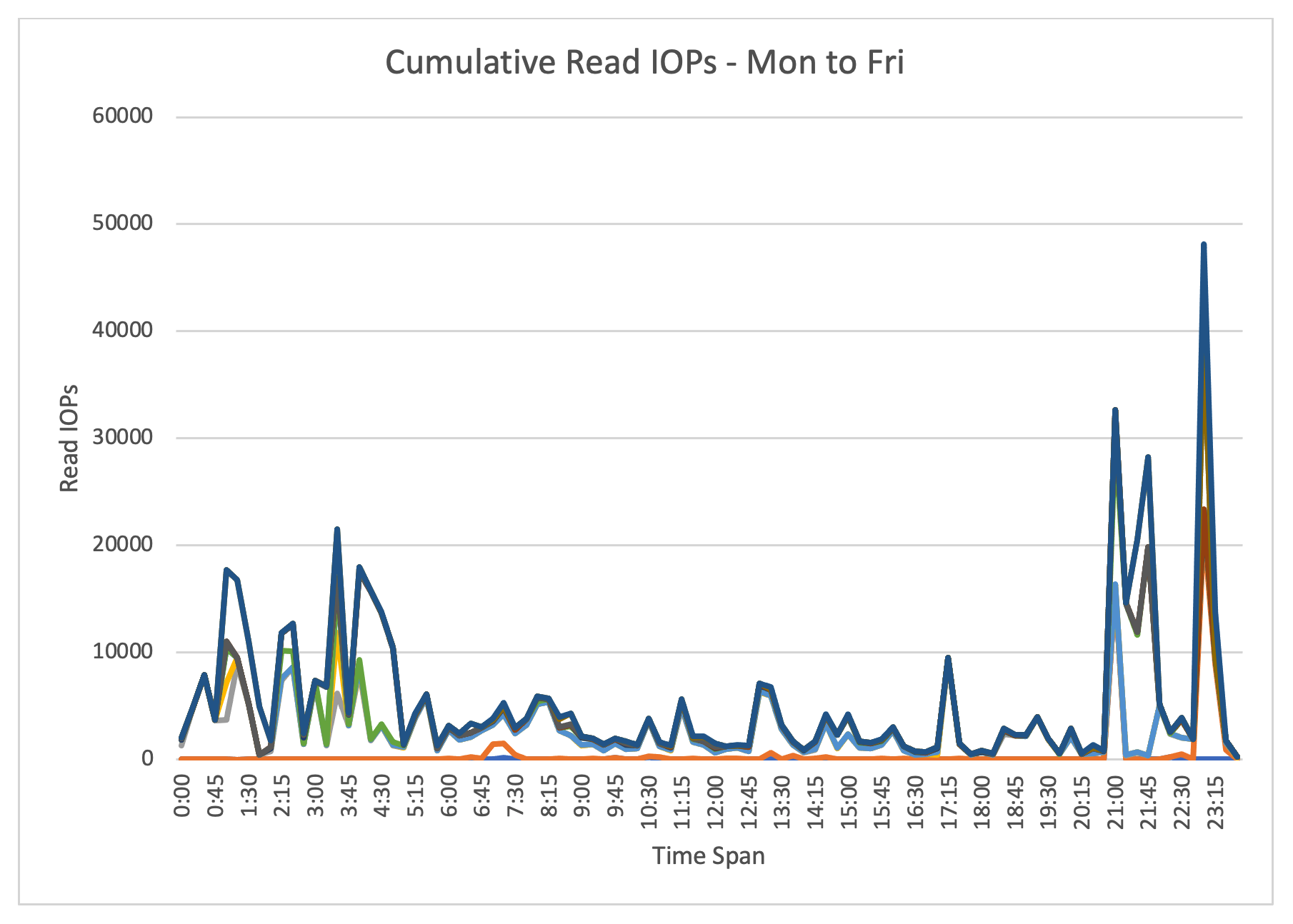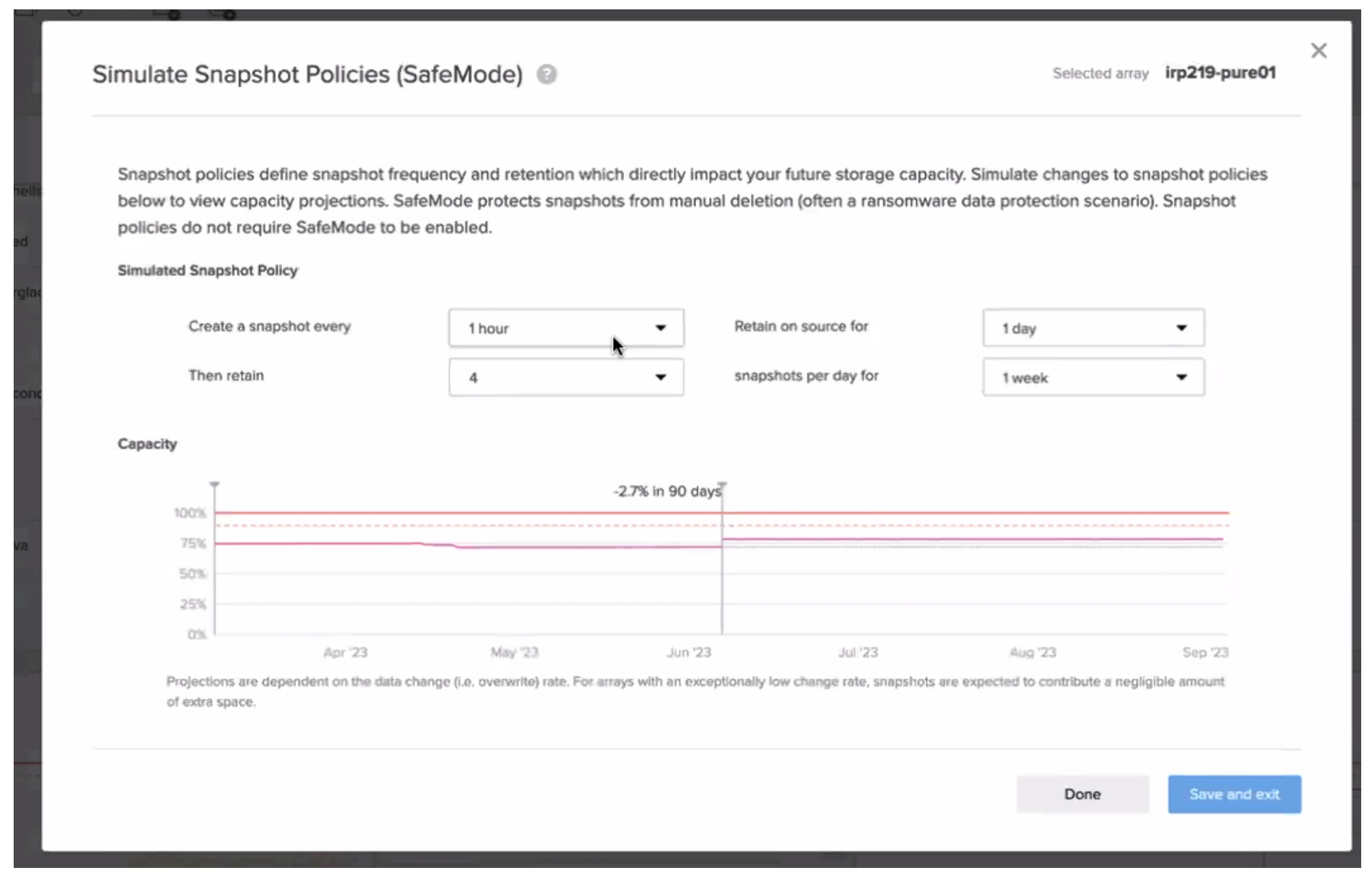Cloud is not always “pay for what you consume”. For enterprise storage underneath demanding I/O-driven workloads such as databases, to get the most speed out of the underlying platform, the model shifts to “pay for what you allocate”. Each VM must allocate more storage capacity than is necessary to maintain the required storage speed for a given workload. For these types of workloads, especially at a larger scale, this model is simply too expensive, but Pure Cloud Block Store is here to help you reduce your monthly storage OPEX, improve database performance, and consolidate storage management.
Performance Ceilings Mean Thick Everything
Public cloud providers, such as Microsoft Azure and Amazon Web Services (AWS), offer simplistic storage for your IaaS workloads. Provision a virtual machine, attach a few virtual disks with the speed characteristics needed to sustain your workload, and you can start configuring your server. This architecture works at a micro-level. However, these disks each come with a performance ceiling, as do the virtual machines themselves. Every virtual disk provisioned is thick provisioned, meaning that you pay for all of the space – and performance – that you allocate, even if you do not consume all of it for your applications.
For example, your current VM has a time sensitive nightly process that consumes roughly 11,000 IOPs as it chews through the previous day’s sales data while it runs each morning. The peak space consumed on disk is a not insignificant 500GB. Take the Azure E8s_v5 virtual machine scale. This scale contains eight vCPUs and 64GB of RAM, and can attach up to 16 data disks. The VM itself has an uncached cumulative storage performance ceiling across all connected virtual disks of 290MB/s and 12,800 total read and write IOPs.
Now, add the performance ceilings of the individual virtual disks. A PremiumSSD P30 one-terabyte performance-oriented virtual disk has a performance ceiling of 5,000 IOPs and 200 MB/s. A P40 two-terabyte virtual disk has a performance ceiling of 7,500 IOPs and 250MB/s. If your workload needs the ability to maximize the I/O performance for this VM scale, the ideal configuration is to provision two P40 disks and try to split up the I/O workload across both disks.
If your workload only requires half a terabyte of space, but needs the performance characteristics only present in larger disks, you’re now overprovisioning the virtual disks you deploy just to maintain the performance. Overprovisioning costs start to stack up. Even “Ultra” disks will be held back by the performance ceilings of the VM itself, even though you can provision disk space allocated separately from the IOPs and throughput ceilings, and costs significantly more for this privilege than premium SSDs.
Now, do this for ten virtual machines. Or one hundred. Or a thousand. Your monthly cloud bill is growing exponentially larger, all because you are overpaying for space allocated just to maintain the necessary performance.
Take a real-world example from a manufacturing organization. Eleven servers’ performance metrics were reviewed to show storage read demand. Note that not all workloads are stressing their storage at the same time.
If each VM has their attached virtual disks sized for the peak I/O demand from each workload, the following chart illustrates the maximum read IOPs required each business day of the week.

Each VM must have provisioned a significant amount of storage just to have the performance ceilings high enough to keep up with the demand. Sized together, this represents a minimum provisioned IOPs storage of almost 124,000 IOPs of virtual disks! The monthly storage costs are most likely now exceeding the cost of the compute for these servers.
Stacking the read demand from each workload shows that most of the workloads are not firing high read rates at the same periods of time.

Thin vs. Thick Aggregate Provisioning
Enter Pure Cloud Block Store. Pure Cloud Block Store is constructed on top of native cloud resources and purpose-built to bring the Pure Storage experience to the public cloud.
Pure Cloud Block Store can allow you to provision storage based on cumulative consumption rather than individual VM-level consumption rates. In essence, you can thin-provision your cloud storage rather than thick-provision it. All of the enterprise features that Pure customers are accustomed to are now present in the cloud, such as data deduplication and compression, snapshots and LUNs provisioned from snapshots (think production to pre-production database refresh), encryption at rest, and replication.
In the example listed above, the VMs are connected to the Pure Cloud Block Store via 10GbE networking, working around the VM-scale storage I/O performance ceilings. While the individual components underneath the Pure Cloud Block Store are subject to the individual ceilings imposed by the cloud providers, the performance of the storage connected to the VMs is limited simply by the amount of networking throughput present on each VM. The Pure Cloud Block Store is now sized for a peak demand of just 50,000 IOPs, an almost 2.5x reduction in peak I/O handling. The cloud costs are reduced, the performance and efficiency are improved for the cloud workloads, and because the VM-scale storage performance ceiling are no longer a problem, the individual workloads will benefit from the higher ceilings.
Additionally, for certain workloads that have multiple copies of the same data (such a databases in a highly available configuration, or preproduction copies of production workloads), the data savings present in Pure Cloud Block Store allows the administrator to provision far less storage than was previously required. Data savings features of inline compression and deduplication are built into Pure Cloud Block Store, and copies of the same data are reduced to zero, which means you save even more money. Network ingress and egress costs for SAN LUN-level replication to different regions are much lower than native cloud storage since the underlying blocks copied are already deduplicated and compressed, and will only replicate blocks that have changed since the last replication.
Conclusion
The value of Pure Cloud Block Store is impossible to ignore. As your business grows and your demand on storage increases, the value is amplified. To learn more about Pure Cloud Block Store, head over to https://www.purestorage.com/products/cloud-block-storage/cbs.html.




